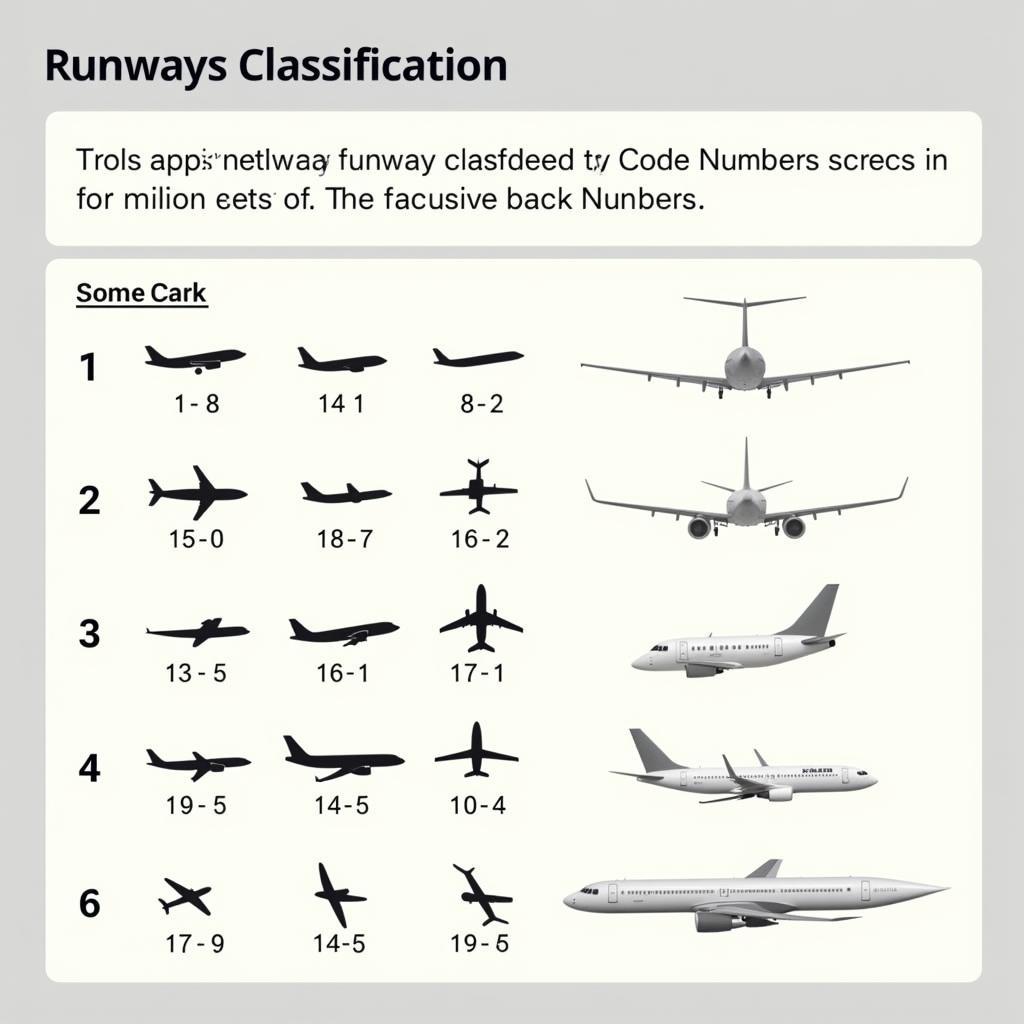Airport Runway Length is a critical factor in aviation safety and efficiency. It dictates the types of aircraft an airport can accommodate and plays a significant role in takeoff and landing procedures. This article delves into the intricacies of runway length, exploring its determining factors, variations across different airports, and the impact it has on the aviation industry. delhi airport runway length provides a good example of how runway length is managed at a busy international airport.
Factors Determining Airport Runway Length
Several crucial factors influence the required length of an airport runway. These include aircraft type, prevailing weather conditions, elevation, and temperature. Larger, heavier aircraft naturally require longer runways for takeoff and landing. Similarly, higher temperatures and altitudes reduce air density, requiring aircraft to achieve higher speeds for takeoff, necessitating longer runways.
Wind conditions also play a significant role. A headwind during takeoff assists in generating lift, shortening the required runway length. Conversely, a tailwind during landing necessitates a longer runway to allow for sufficient deceleration. Understanding these complex interactions is vital for safe airport operations.
Runway Length Variations and Classifications
Runway lengths vary significantly across different airports, reflecting the diverse needs of the aviation industry. Smaller regional airports catering to lighter aircraft may have shorter runways, while international hubs accommodating large, long-haul aircraft require significantly longer runways. For instance, kannur airport runway length may differ considerably from a larger international airport.
Runways are classified based on their Code Numbers, reflecting their load-bearing capacity and suitability for different aircraft types. This classification system ensures that aircraft operate on runways designed to handle their weight and performance characteristics. Understanding these classifications is crucial for pilots and airport operators alike.
 Airport Runway Classifications Chart
Airport Runway Classifications Chart
The Impact of Runway Length on Airport Operations
Airport runway length has a profound impact on airport operations, influencing capacity, efficiency, and safety. Longer runways enable airports to accommodate larger aircraft, increasing their passenger and cargo capacity. They also provide greater flexibility in scheduling flights, optimizing airport throughput.
Safety is paramount, and runway length is a critical safety consideration. Adequate runway length ensures that aircraft have sufficient distance for takeoff and landing, minimizing the risk of accidents. Even seemingly small differences, like those between bangalore airport runway length and calicut airport runway length, can influence the types of aircraft that can safely operate at those airports.
“Runway length is not just a number; it’s a fundamental element of airport design and a cornerstone of aviation safety,” states Dr. Amelia Wright, a renowned aviation engineer. “A properly designed runway, taking into account all influencing factors, is crucial for ensuring the safe and efficient flow of air traffic.”
What is the standard airport runway length?
There is no single “standard” airport runway length. It depends on various factors discussed earlier, such as aircraft type and environmental conditions.
How does elevation affect airport runway length?
Higher elevations require longer runways due to lower air density, which impacts aircraft performance.
Why is airport runway length important for safety?
Sufficient runway length is essential for safe takeoffs and landings, preventing accidents related to insufficient takeoff or landing distance.
How is airport runway length determined?
Runway length is determined by complex calculations considering aircraft performance, environmental factors, and safety margins.
“The length of a runway is a complex equation, balancing the needs of the aircraft with the constraints of the environment,” adds Captain Michael Jones, a seasoned pilot with over 20 years of experience. “Understanding these factors is vital for every pilot.”
In conclusion, airport runway length is a multifaceted aspect of aviation, intricately linked to safety, efficiency, and the overall operation of airports. It’s a crucial consideration in airport design, influencing aircraft operations and the very fabric of air travel. Remember the importance of this element when considering patna airport runway length or any other airport.
FAQ
- What factors determine airport runway length? (Aircraft type, weather conditions, elevation, and temperature)
- Why are runways different lengths? (To accommodate different aircraft types and operating conditions)
- How does runway length impact safety? (Adequate length is crucial for safe takeoffs and landings)
- What are runway classifications? (Codes reflecting load-bearing capacity and suitability for different aircraft)
- How does wind affect runway length requirements? (Headwinds shorten takeoff distances; tailwinds lengthen landing distances)
- Are there standard runway lengths? (No, it depends on various factors specific to each airport)
- What is the role of runway length in airport capacity? (Longer runways accommodate larger aircraft, increasing capacity)
Need help with airport-related information? Contact us! Phone: +13089626264, Email: [email protected], or visit us at 404 Bothwell St, Oxford, NE 68967, USA. We’re available 24/7.